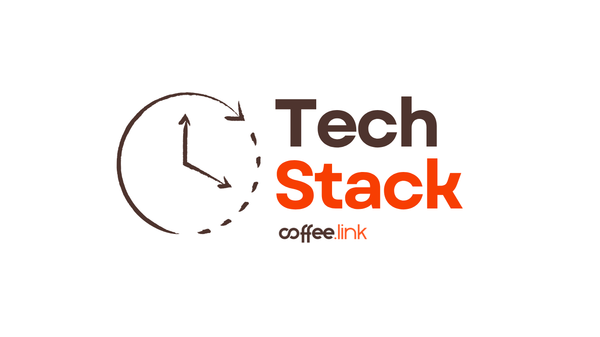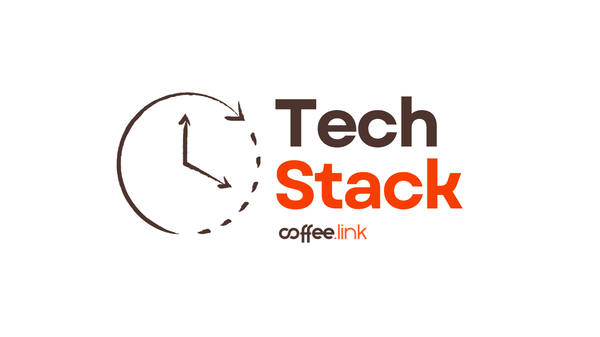The world is building datacenters at a pace that makes the 1990s internet boom look quaint. By 2030, the industry will have invested $7 trillion globally in what amounts to the largest infrastructure buildout in human history. This isn't just growth—it's a fundamental rewiring of global compute infrastructure driven by AI's insatiable appetite for processing power.
The numbers tell a story of unprecedented scale. The four largest hyperscalers—Amazon, Microsoft, Google, and Meta—will spend $320 billion on datacenter infrastructure in 2025 alone, up 39% from 2024. Amazon leads with $100 billion in planned capital expenditure, followed by Google at $85 billion, Microsoft at $80 billion, and Meta targeting $66-72 billion. To put this in perspective, these four companies will spend more on datacenters in 2025 than the entire global airline industry spends on new aircraft over five years.
But the real story isn't the spending—it's the cascading effects rippling through every corner of the global economy. From obscure electrical equipment manufacturers suddenly facing two-year order backlogs to small Texas towns becoming AI computing hubs, the datacenter boom is creating winners and losers at a pace that's difficult to track. Understanding who benefits, who struggles, and what breaks along the way has become essential for anyone trying to navigate the next decade of technology investment.
The builders: hyperscalers redefine infrastructure spending
Amazon Web Services has emerged as the undisputed infrastructure investment champion, committing over $100 billion to datacenter expansion in 2025. The company now operates 38.2 million square feet of datacenter space globally, with major projects including an $11 billion Georgia expansion, $10 billion complexes in both Ohio and North Carolina, and international investments from Spain to Southeast Asia. What's remarkable isn't just the scale but the acceleration—AWS crossed $100 billion in annual revenue for the first time in 2024 while maintaining 19% growth, and nearly 90% of its capital expenditure now targets AI-specific infrastructure.
Microsoft takes a different approach with its $80 billion fiscal 2025 commitment, focusing on strategic partnerships and nuclear power deals. The company's collaboration with BlackRock on a $100 billion AI infrastructure fund and its groundbreaking agreement to restart Three Mile Island Unit 1 for 837 MW of dedicated nuclear power signal a shift toward long-term energy strategy. With over 5GW of documented capacity and plans to add 1.5GW in early 2025 alone, Microsoft is building not just datacenters but entire energy ecosystems.
Google's $85 billion investment reflects its unique position as both a cloud provider and AI innovator. The company operates its global fleet at an industry-leading 1.09 power usage effectiveness (PUE) compared to the 1.56 industry average, demonstrating that scale and efficiency aren't mutually exclusive. Google's partnership with Kairos Power for 500 MW of small modular reactor capacity by 2030 and its continued development of custom TPU chips show a vertically integrated approach to infrastructure challenges.
Meta's astronomical target of 1.3 million GPUs by 2025 drives its $66-72 billion capital expenditure plan. The company's $10 billion Louisiana facility, requiring over 2 gigawatts of power—equivalent to two nuclear plants—will become the world's largest datacenter when complete. Meta's focus on training infrastructure for its Llama models represents a bet that proprietary AI capabilities will define competitive advantage in the social media landscape.
Beyond the hyperscalers, the colocation market is experiencing its own transformation. CoreWeave, the GPU cloud specialist, has rocketed from $30 million revenue in 2022 to $1.9 billion in 2024, achieving a $19 billion valuation despite 62% customer concentration risk from Microsoft. Traditional colocation leaders Equinix and Digital Realty continue their expansion, with Equinix operating 270 datacenters across 75 metros while Digital Realty leverages its 420MW portfolio to capture AI workload growth.
Geographic chess: the new world map of compute
The geographic distribution of datacenter development reveals a fundamental shift in how we think about digital infrastructure. The United States maintains dominance with 60% of global installed capacity, but the map is being redrawn by power availability rather than traditional factors like proximity to users or fiber routes.
Northern Virginia remains the undisputed global datacenter capital, hosting 543 facilities that process 70% of global internet traffic. Amazon alone has invested $35 billion in Virginia datacenters since 2011 with another $35 billion committed through 2040. But success has bred constraints—new facilities face power grid connection delays extending to seven years, forcing operators to explore secondary markets.
Asia-Pacific emerges as the fastest-growing region with 13.1% compound annual growth driving capacity from 20,320 MW in 2025 to 37,580 MW by 2030. The $116 billion required to build out the existing colocation pipeline reflects massive investments from both hyperscalers and regional players. Malaysia leads transformation metrics with an 80% improvement in population-per-megawatt ratio expected by 2030, attracting $2 billion from Google and $2.2 billion from Microsoft.
Europe faces a more complex landscape. While FLAPD markets (Frankfurt, London, Amsterdam, Paris, Dublin) command 10.9GW of capacity, regulatory pressures and power constraints create headwinds. Ireland's moratorium on new datacenter connections through 2028 and the EU's Energy Efficiency Directive mandating sustainability reporting for facilities over 500kW reflect growing tension between digital growth and environmental goals. The continent's average PUE of 1.5 trails North American efficiency, though Nordic countries leverage natural cooling advantages to achieve superior metrics.
The Middle East represents the next frontier, with capacity projected to triple from 1GW in 2024 to 3.3GW by 2030. Saudi Arabia's $100 billion Transcendence AI Initiative and the UAE's National AI Strategy 2031 position the region as an emerging hub. Low energy costs of $0.05-0.06 per kWh provide competitive advantages, though cooling requirements in desert climates push PUE above 1.79, the worst globally.
Government policies increasingly shape geographic winners. The United States offers aggressive incentives with Texas providing $1 billion in subsidies for 2025 and Virginia committing $732 million. Complete sales tax exemptions in states like Indiana for investments over $10 million create material advantages. Meanwhile, Singapore's innovative approach—lifting its datacenter moratorium but requiring stringent green standards including PUE below 1.3—shows how policy can drive technological innovation.
The supply chain winners: selling shovels in a gold rush
The datacenter boom has created a hierarchy of beneficiaries that extends far beyond the operators themselves. At the apex sits NVIDIA, whose dominance in AI accelerators borders on monopolistic. Controlling 80-93% market share with data center revenue exploding 142.4% to $115.2 billion in fiscal 2025, NVIDIA has achieved something rare in technology—a seemingly unassailable competitive position. The company's CUDA software ecosystem creates switching costs that protect its hardware margins, while its recent $5 billion investment in Intel and $100 billion commitment to OpenAI infrastructure demonstrate capital allocation from a position of strength.
AMD remains the perpetual challenger, capturing 11% market share with its MI300 series while projecting "tens of billions" in AI revenue. The company lost $800 million due to China export restrictions but continues pushing forward with MI350 accelerators in volume production. Intel's struggles to compete have pushed it toward partnerships rather than competition, accepting $5 billion from NVIDIA while focusing on cost-effective Gaudi processors for specialized workloads.
The server manufacturers ride the infrastructure wave with remarkable consistency. Dell Technologies leverages its 19.3% global server market share to generate $1.6 billion quarterly from AI systems alone, noting that 70% of the installed base runs legacy hardware ripe for refresh. Hewlett Packard Enterprise posts 18% growth driven by AI demand, while Super Micro Computer achieves 55% year-over-year growth through its modular server approach, racing toward $10 billion in annual revenue.
Networking emerges as a surprising battlefield. Arista Networks leads with 30.4% revenue growth, targeting $10 billion revenue by 2026 through its Etherlink AI platforms delivering 800 Gbps capabilities. But NVIDIA's expansion into networking with 21.1% datacenter Ethernet market share shows how AI compute and connectivity increasingly converge. Broadcom powers both competitors as the essential supplier of networking ASICs and custom chips for hyperscaler silicon.
The cooling and power infrastructure providers face unprecedented demand. Vertiv Holdings reports 24% revenue growth while increasing cooling unit manufacturing capacity by 45x. Schneider Electric's $850 million acquisition of liquid cooling specialist Motivair and partnership with NVIDIA on datacenter design templates position it as the infrastructure integration leader. The global datacenter cooling market's projection to grow from $16.32 billion in 2024 to $40.72 billion by 2030 at 16.46% CAGR reflects the fundamental shift from air to liquid cooling as AI workloads push rack densities past 120kW.
Construction firms experience record backlogs that extend years into the future. Turner Construction's $39 billion backlog represents 21% year-over-year growth with revenue jumping 44% in the first half of 2025 alone. The company now employs over 14,000 people solely to meet datacenter demand. The broader U.S. datacenter construction market grows from $14.35 billion in 2025 to $21.43 billion by 2030, creating sustained opportunity for specialized contractors.
Investment opportunities: beyond the obvious plays
The datacenter sector offers investment opportunities across the risk spectrum, but understanding the nuances separates winners from casualties. Pure-play datacenter REITs Equinix (EQIX) and Digital Realty (DLR) provide the most direct exposure. Equinix trades at a premium with 21 analysts rating it "Strong Buy" and a $952 price target suggesting 21% upside. Digital Realty offers better value at 15x forward price-to-funds-from-operation versus Equinix's 32x, plus a superior 2.81% dividend yield.
For diversified exposure, the Global X Data Center & Digital Infrastructure ETF (DTCR) provides one-stop shopping with $219.5 million in assets and a reasonable 0.50% expense ratio. Its 25-stock portfolio delivered 25.69% returns over the past year, with top holdings including Equinix (12.32%), Digital Realty (11.59%), and American Tower (11.53%). The 56.6% real estate and 40.1% technology allocation captures both the physical infrastructure and enabling technology stories.
Private equity tells perhaps the most compelling story. Blackstone's AU$24 billion acquisition of AirTrunk represents the largest datacenter transaction in history, part of its $70 billion datacenter portfolio with another $100 billion in pipeline. KKR's $15 billion take-private of CyrusOne and Brookfield's $3.8 billion Data4 acquisition show major alternative asset managers viewing datacenters as core infrastructure. The planned $500 billion Stargate AI project, despite its ambitious scope, signals institutional capital's appetite for mega-scale infrastructure investment.
Emerging themes offer higher risk-reward profiles. The liquid cooling market's projected growth from $5.62 billion in 2024 to $65.94 billion by 2034 at 28.1% CAGR creates opportunities in companies like Vertiv and pure-play cooling specialists. Edge computing infrastructure, growing from $23.65 billion to $327.79 billion by 2033 at 33% CAGR, benefits companies positioning for distributed architecture. Small modular reactor partnerships between tech giants and nuclear startups like Kairos Power and X-energy represent decade-long bets on revolutionary energy infrastructure.
Technology evolution: obsolescence accelerates and slows simultaneously
The datacenter industry faces a paradox—technology cycles are simultaneously accelerating and extending, creating complex refresh dynamics that challenge traditional planning. AI workloads compress server refresh cycles from the traditional 5-6 years down to 2-3 years for GPU-intensive systems. When a new generation of AI chips delivers 2.5x performance improvements, the economic logic for rapid replacement becomes overwhelming. Yet sustainability pressures and capital constraints push enterprises to extend traditional server lifecycles to 6+ years, creating a bifurcated market.
The shift from air to liquid cooling represents the most fundamental infrastructure transformation. Traditional cooling systems designed for 15-17kW racks cannot handle AI deployments requiring 60-120kW densities. By 2027, over 50% of new hyperscale capacity will require liquid cooling, driving a market expansion from $4.9 billion in 2024 to $21.3 billion by 2030. Direct-to-chip cooling dominates with 47% market share, while immersion cooling gains traction for the highest density deployments.
Quantum computing remains a 2035+ horizon for meaningful datacenter impact despite $18-72 billion in projected market value. The technology will supplement rather than replace classical computing, with quantum-as-a-service models emerging for specialized applications. Optical computing shows nearer-term promise, with TSMC's silicon photonics capabilities maturing and the first commercial optical processors expected by 2027. The optical processor market reaching $2.7 billion by 2034 seems modest but represents crucial evolution in interconnect technology.
Alternative architectures gain real traction. ARM-based servers from AWS Graviton, Microsoft Cobalt, and NVIDIA Grace deliver 10-40% price-performance improvements over x86 architectures. RISC-V remains 5+ years from datacenter relevance but could emerge in sovereignty-focused markets like China, Brazil, and Europe. The key insight: architectural diversity increases as workload specialization intensifies.
Power crisis: the infrastructure within infrastructure
The numbers paint a stark picture: global datacenter electricity consumption doubles from 415 TWh in 2024 to 945 TWh by 2030, approaching 3% of global electricity production. The U.S. alone faces scenarios where datacenters consume 6.7-12% of total electricity by 2028. This isn't just growth—it's an infrastructure crisis that threatens to constrain the entire industry.
Traditional power planning assumed 15-17kW per rack densities. AI workloads demand 60-120kW per rack, with some deployments exceeding 150kW. Meta's Louisiana facility requires 2 gigawatts—equivalent to two nuclear plants—for a single location. When Google estimates AI will comprise 27% of datacenter workloads by 2027, up from 14% today, the exponential power demand curve becomes clear.
Nuclear power emerges as the surprising solution. Tech giants have committed over $10 billion to nuclear projects, with 22 GW of small modular reactor capacity in development. Google's 500 MW agreement with Kairos Power for molten salt reactors by 2030, Amazon's 5 GW deployment target with X-energy by 2039, and Microsoft's $1.6 billion deal to restart Three Mile Island represent infrastructure bets that extend decades into the future. The renamed "Crane Clean Energy Center" symbolizes nuclear power's image rehabilitation driven by datacenter demand.
Grid constraints create immediate bottlenecks. Northern Virginia faces 7-year connection delays for new facilities. Ireland's datacenters consume over 20% of national electricity, forcing a moratorium through 2028. Even Texas, with abundant power generation, struggles with transmission limitations. The result: 40% of AI datacenters will face power constraints by 2027 according to Gartner, potentially limiting the industry's growth trajectory.
The industry's response involves comprehensive energy strategy evolution. Hyperscalers become the world's largest corporate buyers of renewable energy, with Google achieving 67% carbon-free energy and targeting 24/7 matching by 2030. Behind-the-meter generation through on-site solar, wind, and battery storage reduces grid dependence. Microsoft and Google's large-scale storage investments enable true 24/7 renewable operation, though at significant capital cost.
Supply chain reality: the mundane bottlenecks that matter
While semiconductor availability captures headlines, the real datacenter supply chain crisis lies in decidedly less glamorous components. Electrical transformers face 12-18 month lead times, with custom units extending beyond 40 weeks. These multi-ton devices can't be rushed or substituted, creating project-killing bottlenecks. One hyperscale AI datacenter requires up to 20,000 tons of steel and dozens of specialized transformers—when a single transformer delay can derail an entire project timeline, the criticality becomes apparent.
The skilled labor shortage represents an even more intractable challenge. The United States faces 400,000 unfilled skilled trade positions, projected to reach nearly 2 million by 2033. The average electrician age of 42 means massive retirement waves approach just as demand explodes. Experienced HVAC technicians in major markets command $150,000+ salaries, exceeding many software engineering roles. The irony is palpable: cutting-edge AI infrastructure deployment constrained by shortage of traditional trade workers.
Geopolitical tensions add complexity layers. The Biden and Trump administrations' sequential tightening of China chip exports affects global supply chains in unexpected ways. When China bans germanium, gallium, and antimony exports in retaliation—materials essential for semiconductor manufacturing—the ripple effects extend far beyond direct chip availability. China's control of 60% of battery-grade graphite threatens energy storage systems essential for renewable-powered datacenters.
Construction material inflation moderates but remains elevated. Steel prices rose 9.2% year-over-year in 2025, while specialized equipment like switchgear costs 50% more than pre-pandemic levels. Land prices for 50+ acre datacenter parcels jumped 23% to $5.40 per square foot. Total datacenter construction costs now range $600-1,100 per gross square foot or $7-12 million per megawatt—when Meta spends $10 billion on a single facility, these percentages represent billions in cost escalation.
The industry adapts through strategic evolution. Bulk purchasing agreements shorten project timelines by up to six months despite extending financial commitments. Modular construction using prefabricated components reduces on-site construction time while enabling rapid scaling. Geographic diversification into secondary markets like Columbus, Kansas City, and San Antonio provides relief from primary market constraints while offering lower costs and better resource availability.
Looking forward: navigating the $7 trillion transformation
The datacenter industry stands at an inflection point where multiple exponential curves intersect. AI workload growth, power consumption, cooling requirements, and capital investment all follow trajectories that would seem unsustainable in any other context. Yet the fundamental driver—humanity's insatiable demand for compute—shows no signs of moderating.
Investment implications span traditional boundaries. NVIDIA's dominant position in AI accelerators makes it nearly uninvestable due to valuation, yet potentially catastrophic to ignore. The datacenter REITs offer stable income with growth potential but face interest rate sensitivity that could trigger significant volatility. Construction and electrical equipment manufacturers enjoy multi-year backlogs but may face margin pressure from input cost inflation and competitive dynamics.
The geographic redistribution of compute infrastructure creates second-order opportunities. Communities that solve the power equation—through nuclear partnerships, renewable abundance, or grid infrastructure investment—will capture disproportionate economic benefit. The transition from silicon to photonics, from air to liquid cooling, from centralized to edge architecture creates waves of creative destruction that reward prescient positioning.
Perhaps most critically, the datacenter boom represents critical infrastructure for national competitiveness. Countries that fail to build adequate AI compute capacity risk economic marginalization in an increasingly algorithmic global economy. The $7 trillion investment thesis isn't just about returns—it's about foundational capability for the next phase of human technological development.
The winners will be those who recognize that datacenters have evolved from supporting infrastructure to the infrastructure itself—the physical manifestation of humanity's transition to an AI-mediated future. In this context, $7 trillion might not be an bubble but merely the down payment on tomorrow's digital reality.
Disclaimer
This analysis is for informational purposes only and does not constitute investment advice, financial advice, trading advice, or any other sort of advice. The content should not be relied upon for making investment decisions. Past performance is not indicative of future results. All investments carry risk, including the potential loss of principal. The author and coffee.link are not registered investment advisors and do not purport to tell or suggest which securities readers should buy or sell. Readers should conduct their own research and due diligence and consult with licensed financial professionals before making any investment decisions. The information presented may become outdated and neither the author nor coffee.link commits to updating any such information.
References
Industry Research & Analysis
- McKinsey: The $7 Trillion Race to Scale Data Centers
- BCG: Breaking Barriers to Data Center Growth (2025)
- Goldman Sachs: AI to Drive 165% Increase in Data Center Power Demand by 2030
- Deloitte: Can US Infrastructure Keep Up with the AI Economy?
Market Intelligence
- CBRE: 2025 Global Data Center Investor Intentions Survey
- CBRE: North America Data Center Trends H1 2025
- JLL: 2025 Global Data Center Outlook
- Cushman & Wakefield: EMEA Data Centre Update H1 2025
Company Earnings & Investments
- CNBC: Tech Megacaps to Spend More Than $300 Billion in 2025
- Data Center Dynamics: Amazon 2025 Capex to Reach $100bn
- Data Center Dynamics: Google Expects 2025 Capex to Surge to $75bn
- Microsoft Blog: The Golden Opportunity for American AI
Energy & Sustainability
- IEA: What the Data Centre and AI Boom Could Mean for the Energy Sector
- European Commission: EU-wide Scheme for Rating Sustainability of Data Centres
Government & Policy








